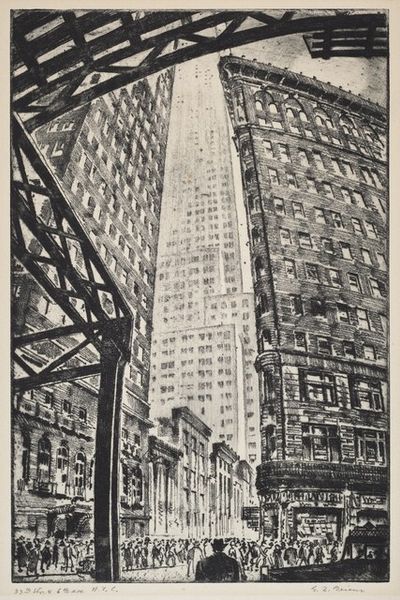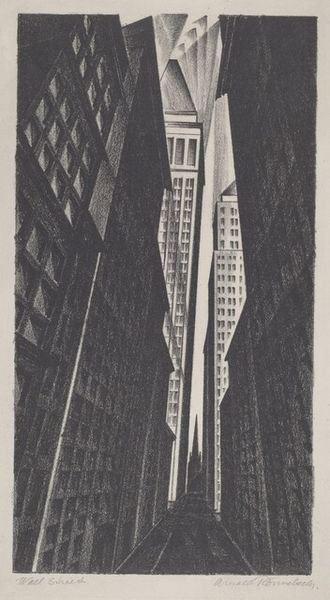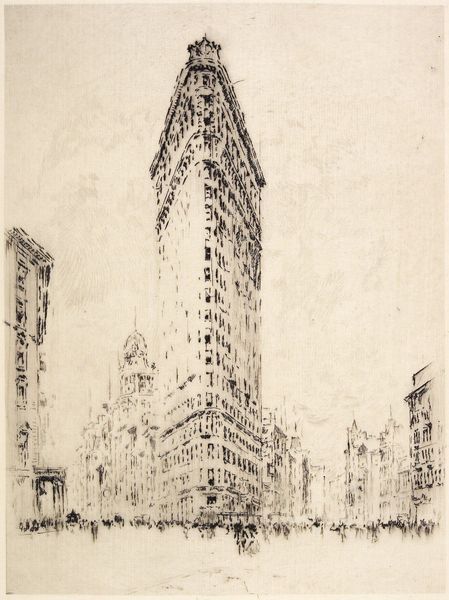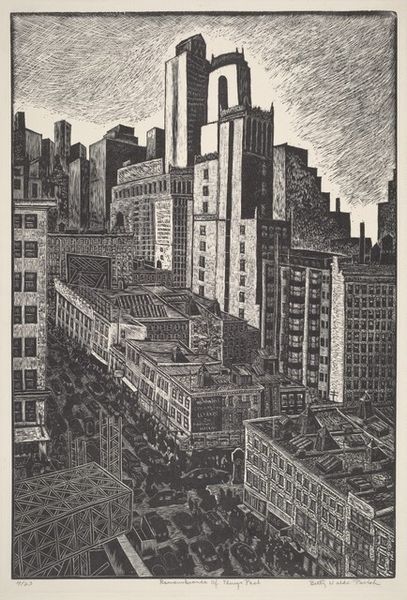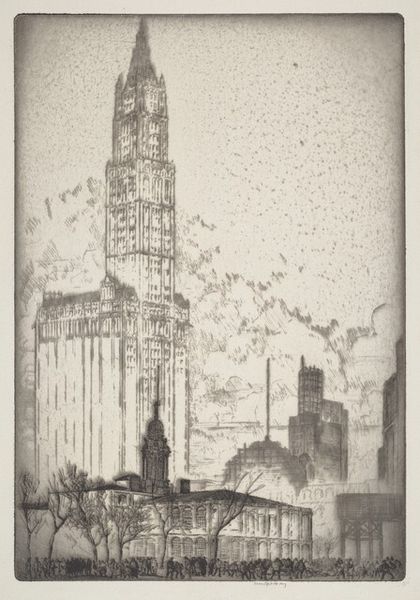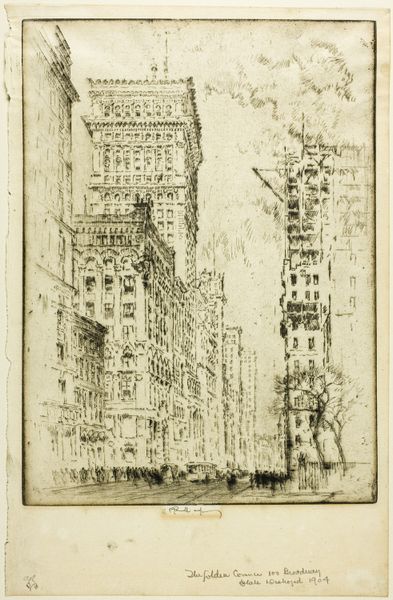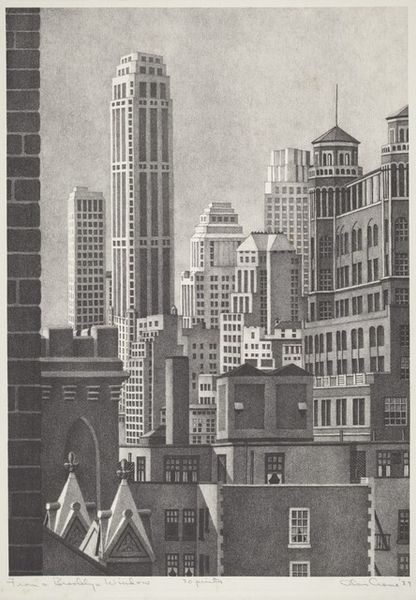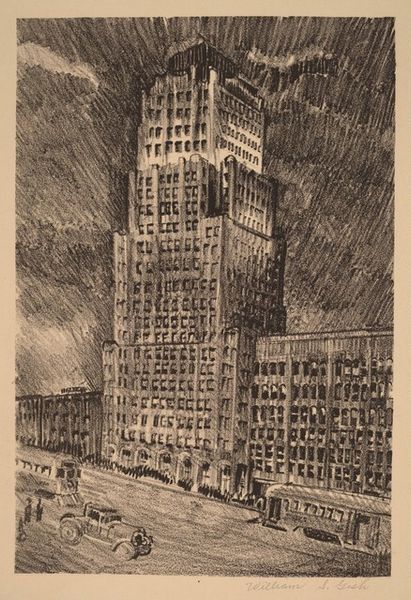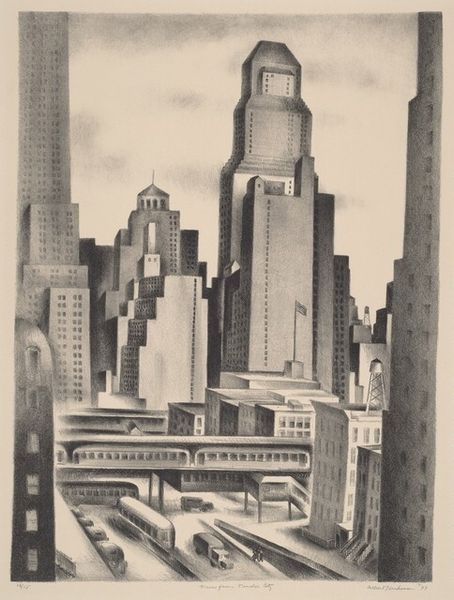
drawing, print, pencil
#
pencil drawn
#
drawing
# print
#
pencil sketch
#
pencil drawing
#
pencil
#
cityscape
#
realism
Dimensions: plate: 348 x 251 mm sheet: 422 x 324 mm
Copyright: National Gallery of Art: CC0 1.0
Editor: So, this is "Rockefeller Center," a 1939 print by Louis H. Ruyl, rendered in pencil. It's a really impressive depiction, quite detailed! How would you approach analyzing this piece? Curator: The immediate thing I notice is the emphasis on industrial production. Pencil, as a relatively inexpensive and easily accessible material, democratizes art making. It stands in stark contrast to the monumentality of the subject: Rockefeller Center, a symbol of capitalist power. Editor: That’s interesting! So the artist's choice of medium clashes with the subject matter? Curator: Exactly. Ruyl is using a humble tool to depict a grand enterprise. This suggests a critical commentary on the spectacle of wealth and the labor that built it. Look closely at the lines – the repetitive marks needed to create such detail. Doesn't it make you think about the vast amount of work needed to create such a building? Editor: Yes, it definitely highlights the process! Were prints like these common during the late 30s? Curator: Indeed, mass production of prints aligns with the material conditions of the era. It allowed wider audiences to access and consume images, raising questions of artistic value versus commodity value, and the rise of consumerism. This also emphasizes the shift from individualized artistry to reproducible forms, doesn't it? Editor: It does make me reconsider the role of the artist within the economic and social landscape. The materiality of a drawing, the choice of pencil rather than ink, completely changes how we read the image. Curator: Precisely. Understanding art involves unpacking these layers of production and consumption.
Comments
No comments
Be the first to comment and join the conversation on the ultimate creative platform.
